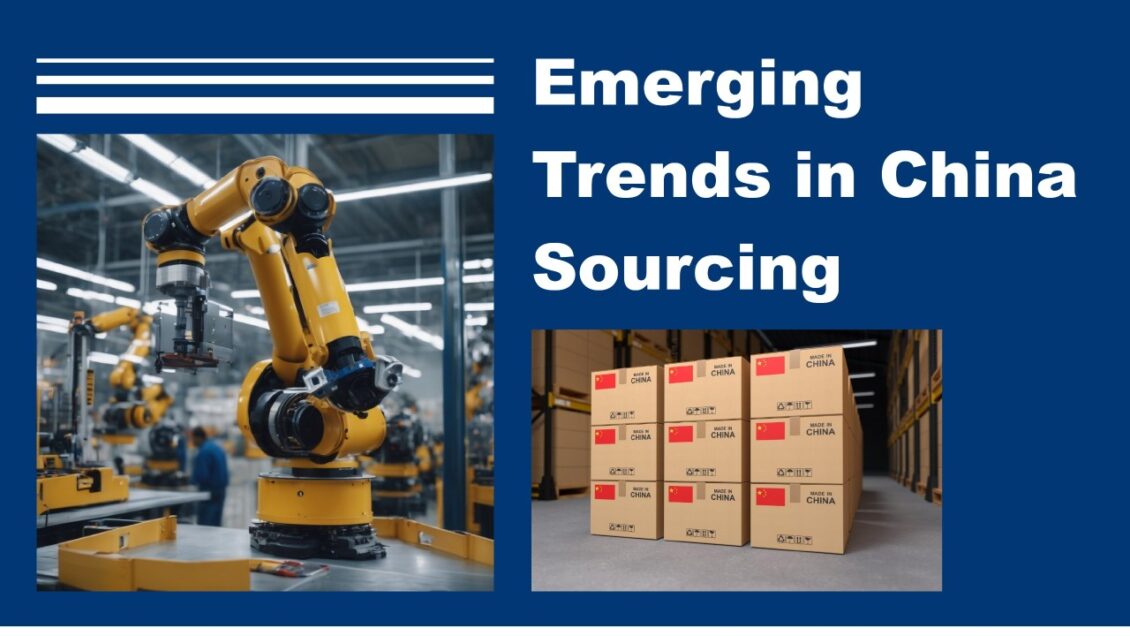In this article, we uncover the changing landscape of China sourcing and how it impacts your business. Discover the essential strategies for a successful future in global supply chains.

China has long been the most prominent destination in global manufacturing and sourcing. However, the landscape of China sourcing is constantly evolving, driven by technological advancements, economic shifts, and global events. One of the notable highlights is the emerging trends in China sourcing and how businesses can adapt to these changes to maintain a competitive edge in the ever-changing world of global supply chains.
The Digital Transformation of Sourcing
One of the most significant trends in China sourcing is the digital transformation of the procurement process. Businesses are increasingly using technology to streamline the sourcing process, such as e-commerce platforms, artificial intelligence, and blockchain technology. These technologies enhance transparency and efficiency, making it easier for businesses to find and qualify suppliers, negotiate contracts, and track shipments:
- E-commerce Platforms: Platforms like Alibaba and JD.com have transformed the way businesses source products from China. These platforms offer a wide range of suppliers and products, making it easier for businesses to connect with potential partners.
- Artificial Intelligence (AI): AI is being used for demand forecasting, quality control, and even virtual product inspections. This technology enables businesses to make data-driven decisions and ensure product quality.
- Blockchain: Blockchain technology is enhancing transparency and traceability in the supply chain. It allows businesses to verify the authenticity of products and ensure ethical sourcing practices.

Eco-Friendly and Sustainable Sourcing
Sustainability is no longer an optional consideration but a necessity for businesses. As a result, there is a growing trend toward eco-friendly and sustainable sourcing practices in China. This includes a focus on reducing waste, conserving resources, and improving labor conditions.
- China’s Green Initiatives: As China sets ambitious goals for reducing carbon emissions and transitioning to a greener economy, businesses will need to adapt their sourcing strategies to comply with stricter environmental regulations and sustainability practices.
- Eco-Friendly Materials: Sourcing materials that are environmentally friendly is becoming increasingly important. This includes using recycled materials, reducing plastic use, and exploring sustainable alternatives.

Shifts in Manufacturing Locations
China remains a manufacturing giant, but there are shifts in where products are being produced within the country. Understanding these changes is essential for successful sourcing.
Rise of Inland Cities: While coastal cities like Shenzhen and Shanghai have traditionally been manufacturing hubs, businesses are increasingly looking to inland cities where costs are lower and labor is still skilled.
Nearshoring and Reshoring: Some businesses are exploring the possibility of moving manufacturing closer to their home markets. The global pandemic highlighted the risks associated with long and complex supply chains, leading to considerations of nearshoring and reshoring.
The Impact of Geopolitical Factors
Geopolitical factors, such as trade tensions and political stability, can significantly affect China sourcing.
- Trade Relations: The relationship between China and major trading partners, especially the United States, plays a crucial role in decision-making. Tariffs and trade policies can disrupt supply chains.
- Political Stability: Political stability and government regulations in China can have a direct impact on business operations. Keeping abreast of these developments is essential for risk assessment.
Prioritizing Quality and Experience
Sourcing from China is undeniably a cost-effective strategy, but it’s a mistake to assume that the lowest price is always the most profitable choice. When evaluating quotes and proposals from different manufacturers, don’t make price the only deciding factor. While price is crucial, it’s wise to prioritize well-established companies that focus on quality and are experienced in serving businesses like yours.
To successfully source goods from China, a company needs to master essential skills. These include ensuring quality and control, like assessing a supplier’s ability to meet requirements and testing product prototypes. Additionally, managing logistics, meeting customs regulations, and arranging shipments are equally important aspects of the sourcing process.

Conclusion
China sourcing is continually evolving, influenced by technological advancements, environmental concerns, and geopolitical factors. Staying informed about these emerging trends is essential for businesses looking to maintain a competitive edge in the global supply chain.
By leveraging technology, adopting sustainable practices, and staying attuned to changes in manufacturing locations and geopolitical dynamics, businesses can navigate the future of China sourcing successfully.
Experts in the Automotive Industry Asia
You need one, but don`t want to hire one permanently?
Our solution: To rent our experts
- On pay-to-use basis
- Completely flexible
- Contract can be cancelled any time
Clearly represented reports and dashboards inclusive!

